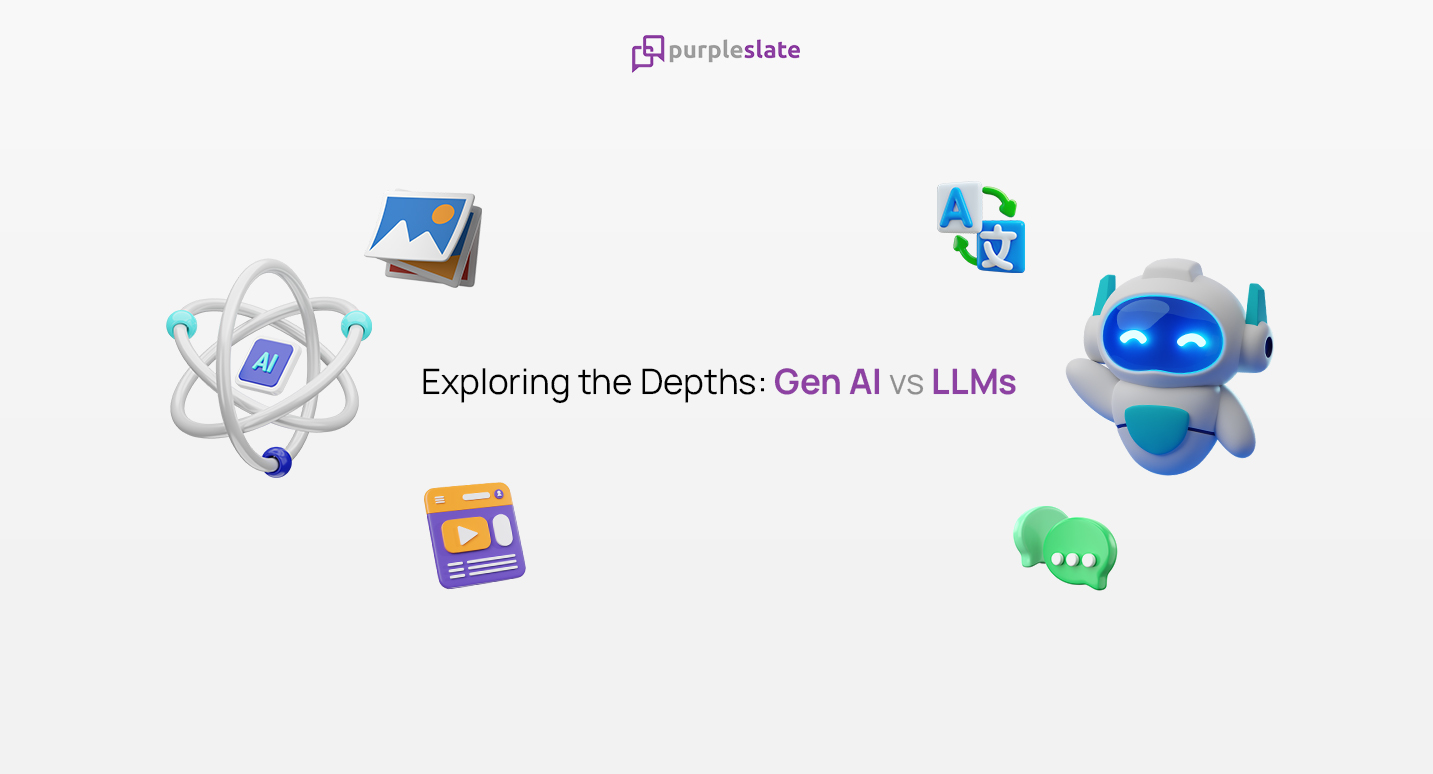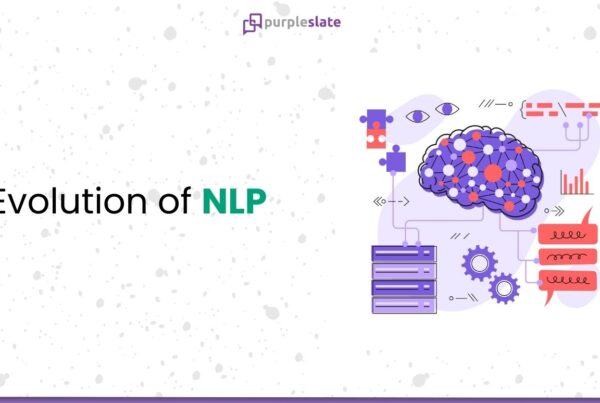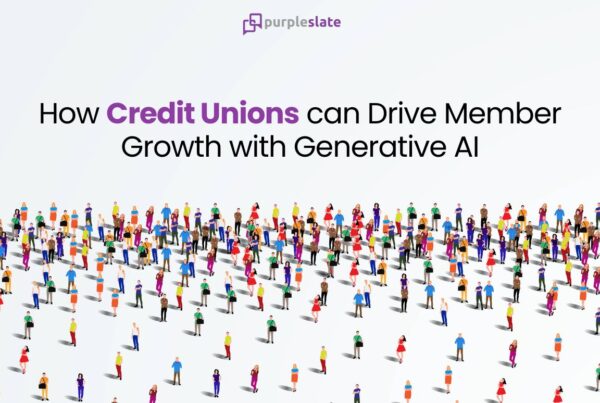
Introduction
Artificial Intelligence (AI) has witnessed monumental advancements in recent years, with two prominent technologies at the forefront: Generative AI and Large Language Models (LLMs). These technologies, while related, serve distinct purposes and possess unique capabilities. Understanding the difference between Generative AI and LLMs is crucial for grasping their respective impacts, applications, and potentials. This blog delves into the disparities between these two AI paradigms through a series of insightful use cases.
The Essence of Generative AI
Generative AI refers to a class of algorithms that are capable of creating new content autonomously. This content can range from images and music to text and even entire narratives. Unlike traditional AI systems, which rely on predefined rules and datasets, generative AI models have the ability to produce novel outputs by learning patterns and features from vast amounts of data.
How Generative AI Works
Generative AI models typically operate using neural networks, a computational architecture inspired by the human brain. These networks consist of interconnected nodes that process and analyze data in parallel, mimicking the complex interactions of neurons. Generative AI algorithms leverage this network structure to learn the underlying distribution of a given dataset, enabling them to generate realistic and coherent outputs.
Applications of Generative AI
Generative AI has found applications across various domains, including:
Creative Industries: Generative AI has revolutionized the fields of art, music, and literature by enabling artists and creators to explore new forms of expression. For example, AI-generated artworks have been featured in galleries and exhibitions worldwide, blurring the lines between human and machine creativity.
Language Translation: Generative AI breaks linguistic barriers by facilitating accurate translation across languages. It preserves nuances and cultural context, fostering collaboration on a global scale.
Content Generation: In media and entertainment, generative AI is used to automate the creation of content such as articles, videos, and advertisements. This streamlines production processes and enables organizations to produce personalized content at scale.
Personalized Recommendations: Generative AI powers personalized recommendation systems, delivering tailored suggestions and content recommendations to users based on their preferences, behavior, and past interactions. By analyzing user data and patterns, Generative AI predicts user preferences and interests, curating personalized experiences across various platforms and applications.
Image and Video Generation: Generative AI creates immersive visual experiences through image and video generation. It produces realistic images and videos, opening new possibilities in visual content creation.
Virtual Try-On and Fashion Design: Generative AI revolutionizes the fashion industry by enabling virtual try-on experiences and facilitating fashion design processes. By analyzing body measurements and style preferences, Generative AI creates virtual avatars that users can dress up with virtual garments and accessories, allowing them to visualize how clothing items would look and fit before making a purchase.
Healthcare and Drug Discovery: Generative AI aids in disease diagnosis and drug discovery, empowering healthcare professionals to make informed decisions and accelerate drug development processes.
Unveiling Large Language Models (LLMs)
Large Language Models represent a specialized subset of generative AI that focuses specifically on understanding and generating human language. These models, often built upon advanced neural network architectures, have achieved remarkable proficiency in tasks such as natural language understanding, generation, and translation.
Key Characteristics of LLMs
LLMs exhibit several key characteristics that distinguish them from traditional generative AI models:
Scale: LLMs are trained on vast amounts of text data, encompassing billions of words sourced from diverse sources such as books, articles, and websites. This extensive training corpus enables LLMs to capture the nuances of human language and generate contextually rich outputs.
Adaptability: LLMs possess the ability to adapt to various linguistic contexts and styles. Through fine-tuning on specific datasets or tasks, these models can tailor their outputs to match the desired domain or tone, making them highly versatile in real-world applications.
Continual Learning: LLMs can be continuously updated and refined using additional data, allowing them to stay abreast of evolving language trends and patterns. This capability ensures that LLMs remain relevant and effective in dynamic environments.
Applications of LLMs
LLMs have garnered significant attention across numerous fields, owing to their proficiency in natural language processing. Some notable applications include:
Conversational Agents: LLMs serve as the underlying technology for virtual assistants and chatbots, enabling them to engage in meaningful conversations and provide assistance across various domains. Companies leverage LLM-powered chatbots for customer support, information retrieval, and personalized recommendations.
Language Translation: LLMs excel in machine translation tasks, facilitating communication across language barriers. Advanced models like Google’s BERT and OpenAI’s GPT (Generative Pre-trained Transformer) have demonstrated remarkable accuracy in translating between multiple languages, enhancing global connectivity and accessibility.
Text Generation: LLMs are proficient in generating coherent and contextually relevant text across diverse genres and styles. From writing news articles to composing poetry, these models exhibit a remarkable capacity for creative expression and storytelling.
Natural Language Understanding: LLMs excel in understanding and generating human-like text, enabling various applications in natural language processing (NLP). They comprehend context, syntax, and semantics, facilitating tasks such as sentiment analysis, named entity recognition, and text summarization.
Chatbots and Virtual Assistants: LLMs drive the development of chatbots and virtual assistants, offering human-like interactions and personalized assistance. They understand user queries, extract relevant information, and provide contextually relevant responses, enhancing user experiences in customer service, information retrieval, and task automation.
Code Generation and Programming: LLMs aid developers in code generation and programming tasks by providing code completion suggestions, bug detection, and code refactoring recommendations. They understand programming languages and coding conventions, assisting developers in writing efficient and error-free code.
Difference between Generative AI vs. LLMS
While both Generative AI and LLMs fall under the broader umbrella of artificial intelligence, they differ in their focus, capabilities, and applications. Below are some key points of comparison:
| Aspect | Generative AI | Large Language Models |
| Text Generation | Autonomously generates diverse text content | Emulates human language patterns for text generation |
| Language Understanding | Limited understanding, focused on generating text | Comprehensive language understanding across domains |
| Training Data | Often trained on specific datasets for targeted outputs | Pre-trained on vast corpora of text for general language understanding |
| Application Flexibility | May require fine-tuning for specialized tasks | Adaptable to diverse applications with minimal customization |
| Content Personalization | Limited ability to personalize content | Capable of personalizing content based on user preferences and context |
| Real-time Interaction | Limited interactivity, primarily output generation | Supports real-time interaction and response to user inputs |
| Computational Resources | Typically requires less computational resources | Requires significant computational resources for training and inference |
| Use Cases | Content creation, creative writing assistance, chatbots | Language translation, question answering, personalized recommendations |
Embracing Innovation with ParrotGPT
ParrotGPT isn’t just another AI tool – it’s a gateway to limitless creativity and efficiency. Here’s how ParrotGPT revolutionizes the AI experience:
Create Your Own Chatbot: With ParrotGPT, crafting your personalized chatbot has never been easier. Whether for customer support, virtual companionship, or educational purposes, unleash your imagination and bring your chatbot to life effortlessly.
Advanced Features: ParrotGPT goes beyond basic chatbot capabilities, offering a plethora of advanced features such as text summarization, Q&A with Gen AI, grammar correction, content generation, and much more. Say goodbye to mundane tasks and embrace a world of streamlined productivity and innovation with Parrot Playground.
Empowering Users: ParrotGPT empowers users of all backgrounds and expertise levels to harness the power of AI. Whether you’re a seasoned developer or a curious enthusiast, ParrotGPT provides intuitive tools and resources to unleash your creative potential and achieve remarkable results.




